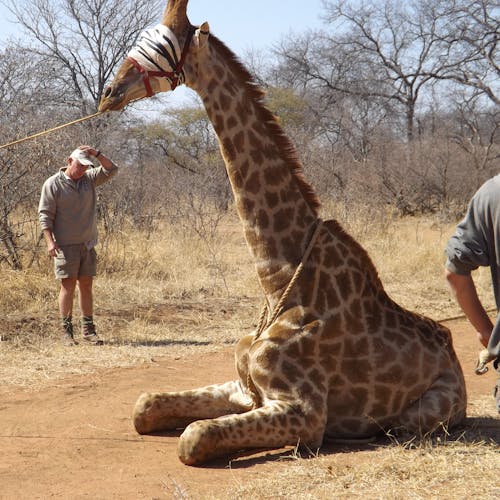
Veterinary graduate in the African bush
I graduated as a vet in July 2011 from the Royal Veterinary College in London. Despite wanting to work with small animals, it was an initial fascination with wildlife (and dinosaurs) that initially made me want to become a vet. I wanted a chance to work with wildlife, just for a short period, so I could have an idea of what it entailed, and hopefully get an adventure out of it!
I booked my placement with African Conservation Experience (ACE) about a year in advance. I let them know that I would be a qualified vet, and they arranged for me to join the Nsikazi project.
Ten days after graduating, I was on a plane to Johannesburg! Where I, along with several other volunteers, was met by Martin Borman, ACE’s contact in SA. The reserve on which I stayed was near Nelspruit, about 4 hours East of Johannesburg.
The head of the project was Dr Cobus Raath, a renowned wildlife veterinarian and a wonderful man. He, and everyone else on the reserve were very friendly and welcoming. Cobus is so knowledgeable about wildlife and was good enough to give us lots of lectures on the state of wildlife veterinary medicine, on the days when there was no field work to undertake (of which there were few).
During my 8 weeks, I was lucky enough to work with a huge range of animals, from tracking lions and elephants to disease control in buffalo to treating wounds on antelope and ostrich. The majority of the work undertaken while I was there involved trimming the horns of rhinos to prevent them from being poached. While it is such a shame that the modern world dictates that this is necessary, it was very fulfilling to be involved in a process which has been proven to help reduce the number of rhinos poached. The reserves which had started to time their rhino horns reported a large improvement in the number of poaching incidents.
Without a doubt, my favourite activity was capturing giraffes to move them from one reserve to another. This involved chasing after them, tying them up and leading them into trailers, all the while trying not to get kicked or having to hurl oneself into a thorn bush to avoid being trampled! Add in hurtling around game reserves, clinging to the back of a jeep, and it made for an incredibly fun and exciting day.
When not working, we organised day trips. These included one to the Kruger Park, God’s Window, and Bourke’s Luck Potholes - utterly beautiful places. Myself and a few other volunteers even managed a weekend road trip to Swaziland, where we stayed at a lodge in the middle of a very pretty reserve.
I could go on and on about my 8 weeks there, and all the volunteers I met could surely do the same. Suffice it to say, I had a fantastic time and would love to get a chance to go back one day.
I would absolutely recommend this project to anyone with an interest in wildlife veterinary medicine.
Siddarth Sudunagunta
